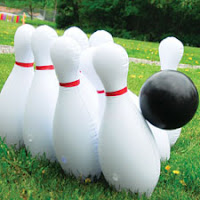We can remember pretending as children and how exhilarating it was to use our imagination to transport us to other places while transforming us into pirates, princesses and dragons. As parents we know for our children pretend play provides a multitude of rich experiences that impact their moral, language, cognitive and physical developments. Hard to imagine one type of play could benefit them so much.
When our children engage in pretend play, they are actively experimenting with the social and emotional roles of life. Through this cooperative play, they learn how to take turns, share responsibility, and creatively problem-solve.
Typically pretend play is viewed as indoor, quiet fun. Spring provides us with such wonderful surroundings. The trees are in bloom, the grass is plush and the flowers are blossoming. This is the perfect landscape for your children to enjoy some quiet fun outside amongst nature’s beauty. With this in mind, we are featuring two of our exclusive pretend play educational toys with an outdoor influence to enjoy both indoors and out. For your little girls who love taking their Today’sGirl Doll everywhere they go, we have the adorable scooter set. Allow your 18-inch doll (Today’s Girl) to wheel around on her scooter with her friends. It’s the perfect way to provide pretend play with the great outdoors. For the rough and tumble boys who love to be so active our Everglade Patrol allows them to slow down just enough to fly overhead with the rugged seaplane and capture alligators from their swamp boat. The fresh air and sunshine will awaken their minds and they will pretend to be different characters; "walking in someone else's shoes," which provides the important moral development skill of empathy. And don’t forget pretend play helps your child understand the power of language. By pretend playing with others, they learn words give them the means to reenact a story or organize play. This process helps your child to make the connection between spoken and written language — a skill that will later help them learn to read. So think outside of the box and take some of your “inside” toys outside and discover how your children can learn and grow using their toys in a different way.





